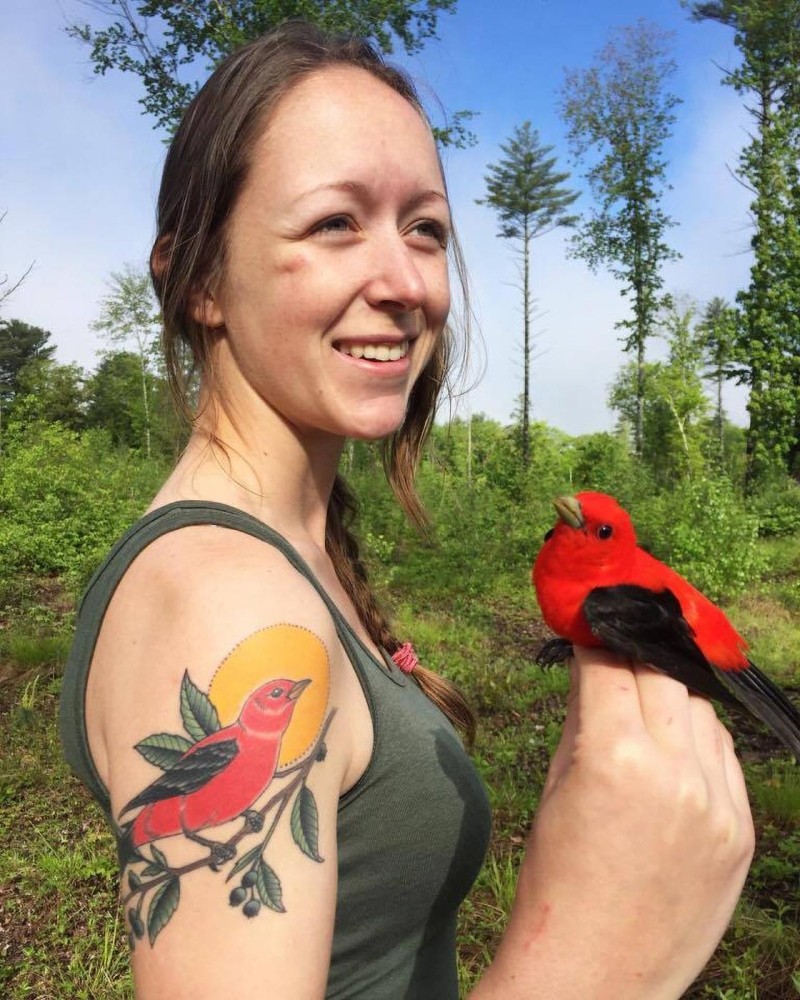
Erica Holm grew up in what she describes as a typical suburban neighborhood in southern New Hampshire. Although she wasn’t a particularly outdoorsy kid, she pursued a degree in natural resources. In 2019, she moved to Boston and worked initially with the Emerald Necklace Conservancy. At the beginning of 2022, she became Mass Audubon’s first urban ecologist. She is also an arborist-in-training with Urban Vegetation Rangers and A&B Tree and Landscape, and co-chair of the Urban Ecology Collaborative, a regional urban forestry research and practitioners’ group.
Growing up, I really loved animals. I had a chocolate lab named Buddy. I was a horse girl and did nine years of horseback riding lessons and camps. I took veterinary science courses at my high school, Alvirne High School, but ultimately decided I didn’t want to become a vet. I knew I was going to the University of New Hampshire, and I wanted to pick a major that would allow me to learn about the outdoors and animals, so I chose Natural Resources: Wildlife and Conservation Biology. My first year, I took Field Dendrology, Intro to Natural History, Wildlife Ecology and Biology. I just loved it. I connected with ecology. It made sense to me. I got my bachelor of science in 2016 in Wildlife and Conservation Biology. I kept going to UNH for three more years after that, working toward a master’s in the same field.
In the graduate program, I took an Environmental Sociology course with Tom Safford. That’s probably the reason I’m in the position I am now. The perspectives that I gained from a lot of those readings have helped me to connect with the human intersections with nature – and think about the conflicts that often happen at those intersections.
My first internship during college was with Plum Creek Timber, which has since been bought by Weyerhaeuser. I was a sophomore and had just turned 18. I went up to Bingham, Maine, found an apartment on a logging road. Sunup to sundown, I worked on their regeneration survey. I learned more that’s applicable to my job now at that internship than I could put a dollar value on or compare to any other early experiences that I had. It was a really amazing summer. They invited me in. They exposed their interns to silviculturalists. They sent us out with different foresters. They also took us to bridge sizing and culvert replacement training – so we were learning how big a culvert needed to be for this brook to be healthy and maintain a logging road. That really felt like a human need and natural resource connection to me. When I moved to Boston, I realized that every single bridge and culvert is undersized in a city. It’s just something I think about when I see the spaces around me now.
The next summer, I was hired as a songbird banding assistant, working with Randy Shoe and Matt Tarr. We were working on prairie warblers and field sparrows, although of course we had experiences with other birds. The first day I ever banded birds on my own – when I was good enough to be trusted to go out and set up the mist nets and take all the data alone – the first bird I caught that day was a male scarlet tanager in full breeding plumage. It was magical to me. I was blown away. At that point, I didn’t know what a scarlet tanager was – I was so focused on prairie warblers and field sparrows. I have a male scarlet tanager tattooed on my right shoulder now, a reminder that science can always show you something new, and it can be this intense moment of connection with the natural world –which is very important in my role now.
When I first moved to Boston, I lived across from the Arnold Arboretum. I didn’t realize the resource it was at the time. I would walk my rescue dog, Mango, in the arboretum every day. I would use green space as a way to cope with things I was struggling with. When I moved to Boston, I saw that there are people who haven’t had the suburban upbringing experience. They’ve never been to the White Mountains. They don’t have that summer of cruising clear cuts and looking at regenerating forests and running into moose and seeing black bears eating blueberries and having hummingbirds around.
I thought, if it was this hard for me – as a middle class person, white, able to go to college, able-bodied, has one degree and most of another – to get a job that would pay a living wage in the city of Boston, how hard are these experiences to have for someone facing more barriers? I view myself as almost already completely irrelevant in this space – it’s all about the people who are coming next. If I can transfer any of this to them, that’s really one of the key ways that I think an urban ecologist functions. You help people understand how this urbanization is affecting nature, but you are in nature. It’s all around you, and you can have experiences like the ones that I’ve had that have been these spark moments.
Urban ecology is the intersection of nature and people – and whatever is happening there. It’s extremely broad. I actually believe that residents of cities are urban ecologists if they’ve ever connected with their urban greenspaces, or if they regularly use their urban greenspaces. As a profession, urban ecologists network with other people who are working on the interface of nature and people in the city – so, city planners, city arborists, environmental nonprofits and friends groups that have vested interests in some aspect of nature in cities.
At Plum Creek Timber, I was able to go on the walk-alongs for their sustainable forestry initiative audit. At that audit, I had seen the wildlife biologists and the foresters interacting, as well as the auditors. I was really interested in where are these different specialties disagreeing, to the disadvantage of the landscape? Where is the wildlife biologist saying, “This absolutely can’t happen on this site,” and the forester is saying, “This is what has to happen?” I’m interested in that fight, and I think that comes back to urban ecology and urban forestry quite a bit. There are a lot of nonprofits and private companies that work with arborists. There are a lot of residents who might think of an arborist as someone who just cuts trees. And there are knowledge gaps and different goals. I’m so interested in that. I want to be at that intersection, and I want to help – to the benefit of trees and people and birds and wildlife. Where can we take the vast knowledge that we all have collectively and make a city more livable?
I’m the first urban ecologist at Mass Audubon, and it’s been an evolving role. There’s a team of about 15 ecologists who work on different specialties in our Conservation Science Department. One of the main motivations for hiring me is Mass Audubon’s 5-year Action Agenda, which involves three main goals – stewarding resilient landscapes, increasing inclusive and equitable access to nature, and mobilizing to fight climate change. That second action agenda item – increasing inclusive and equitable access to nature – often happens in urban areas. We felt like we really needed an urban ecologist on staff to think about how Mass Audubon’s strengths in conservation and our mission of protecting the nature of Massachusetts for people and wildlife – how can we bolster that? There’s a program called Nature in the City laying the groundwork for Mass Audubon’s activities in urban areas, and that is something that is part of my role. I’m also working with Nick Long, from the City of Boston’s Urban Wilds Program, to join the Forests in Cities Network – a national effort to understand and improve natural areas in cities through practitioner integration and research sharing.
Boston has 26 1/2 percent tree canopy over the whole city, which is pretty good, but not as good as it could be. More than 60 percent of that canopy is on private property. Our biggest canopy losses have been on residential land use types. Urban tree canopy is really important for public health as well as just the livability of the city. It’s shade, it’s cooling, it’s climate resilience. It’s where the birds live. I think urban trees are where everything happens. I think they’re one of our greatest tools to address a sustainable city.
I’m a climbing arborist on the side. Tree people are the best people on earth. I’ve been so inspired by some really great mentors who are urban foresters and arborists. Arborists have committed their lives and their careers to learning about trees. Before I moved here, I didn’t know that people climbed trees to take care of them. I also didn’t know enough about how trees grow to realize that structural pruning can extend the life of an urban tree by a significant amount. Arborists are doing physics, they’re doing biophysiology. But they’re not just pruning. They’re also delivering treatments, like injections for emerald ash borer or soil fertilization. They’re often responsible for making recommendations to private landowners – and public land managers, in some cases – about what to plant, which affects the biodiversity of urban forests, and then that affects everything else.
I am headed to the Women’s Tree Climbing Workshop in Mount Washington, Massachusetts, in late September – and encourage anyone with interest in tree climbing and arboriculture to check out what they do in terms of mentorship, elevating safe practices in the field, and increasing equity in the industry.
Mass Audubon has planted a microforest at the Boston Nature Center in Mattapan. The Boston Nature Center has a great backstory – it used to be a state hospital, so it’s a huge brownfield restoration site that’s been more than 20 years in the making. There’s a big development happening along our southern property border there now, with housing for seniors and folks who have aged out of foster care. We’re going to be their closest accessible greenspace.
Along that property border, we have used a technique called the Miyawaki Method, named after Japanese botanist Akira Miyawaki, to restore a piece of forest. The microforest is about 1,900 square feet. We started by pulling up gravel from a section of our parking lot. We did some soil amendment, we brought in loam, compost, and mulch. The we did and a very dense planting of a really wide variety of species. We planted 333 plants of 33 species – 182 of those plants were trees. It has a climax canopy species layer, which is a major component and an important part of the Miyawaki Method – to think about what the potential natural vegetation of that area is, and then plant climax canopy trees to jump start a seed bank. We did a lot of sugar maple, a lot of oaks – scarlet oak, red oak, swamp white oak – and shagbark hickory. We also have understory tree species, native perennials, and shrubs.
I’m curious about what is going to happen in this microforest. I would love to study bird populations and insect use here. We are going to monitor how each plant does, so this can be a demonstration site and help people understand what to expect. There are microforests around the world that are significantly older, and they look like natural areas – they look like forests. I think this is going to be another natural area, but maybe instead of having so many invasive plants, it will have a native plant community
Another project I’ve been involved with at Mass Audubon is this community generated advocacy to preserve Crane Ledge Woods, which is a natural area in Boston. It’s about 27 acres, privately owned. It has a development proposed on it which would involve a significant amount of blasting and tree removal. The community in the neighborhood has really stood up and formed a Save Crane Ledge Woods coalition. Mass Audubon has been meeting with them to try to do some of this scientific and geospatial analysis – what is the value of this tree canopy to this city? That project is very similar to other projects in Boston where the community has really shown that they are thinking about urban forests and envisioning different things for city plans. We’re trying to find ways, in terms of urban ecology, of how do you support communities in their lived experience in their city, and how do you help advance inclusive and equitable access to nature?
I think urban ecology is important, because we’re not the only generation. We’re not the only people using these natural resources. We’re not the only people living on earth. There is a future natural resources debt that we are creating. I think urban ecology and urban forestry offer an opportunity to address some of those things and to empower people to feel like they’ve really made a difference, and to help them pass good things on. There are a lot of healing things about nature. The city is an important place to focus on conservation so that we don’t completely disconnect from the natural cycles.


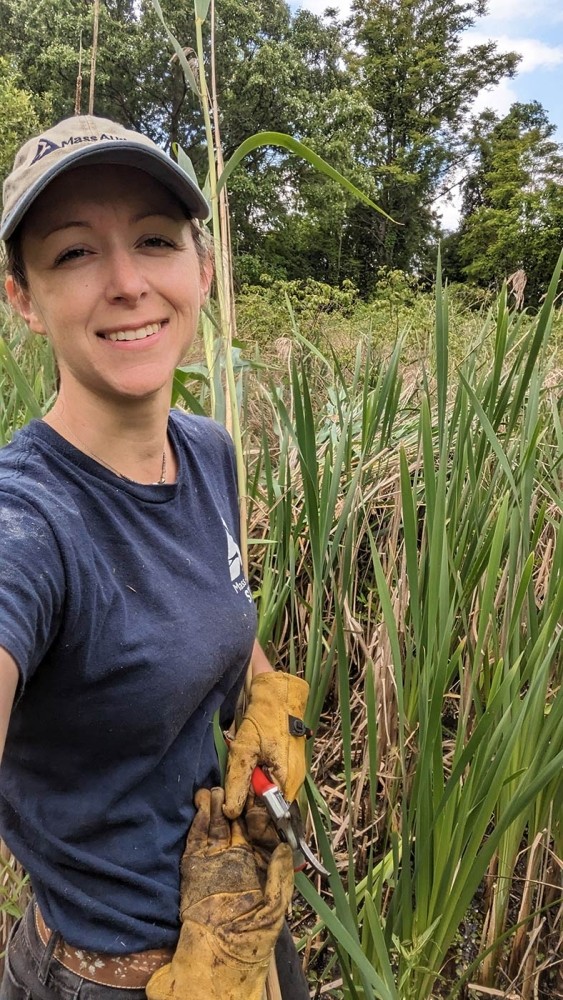
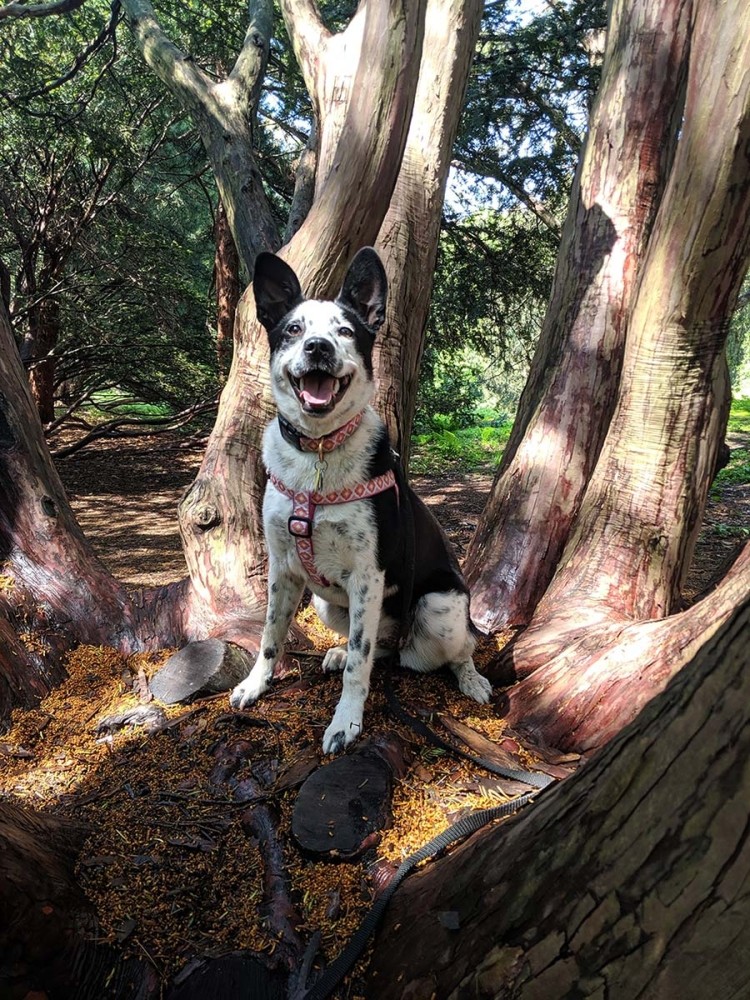
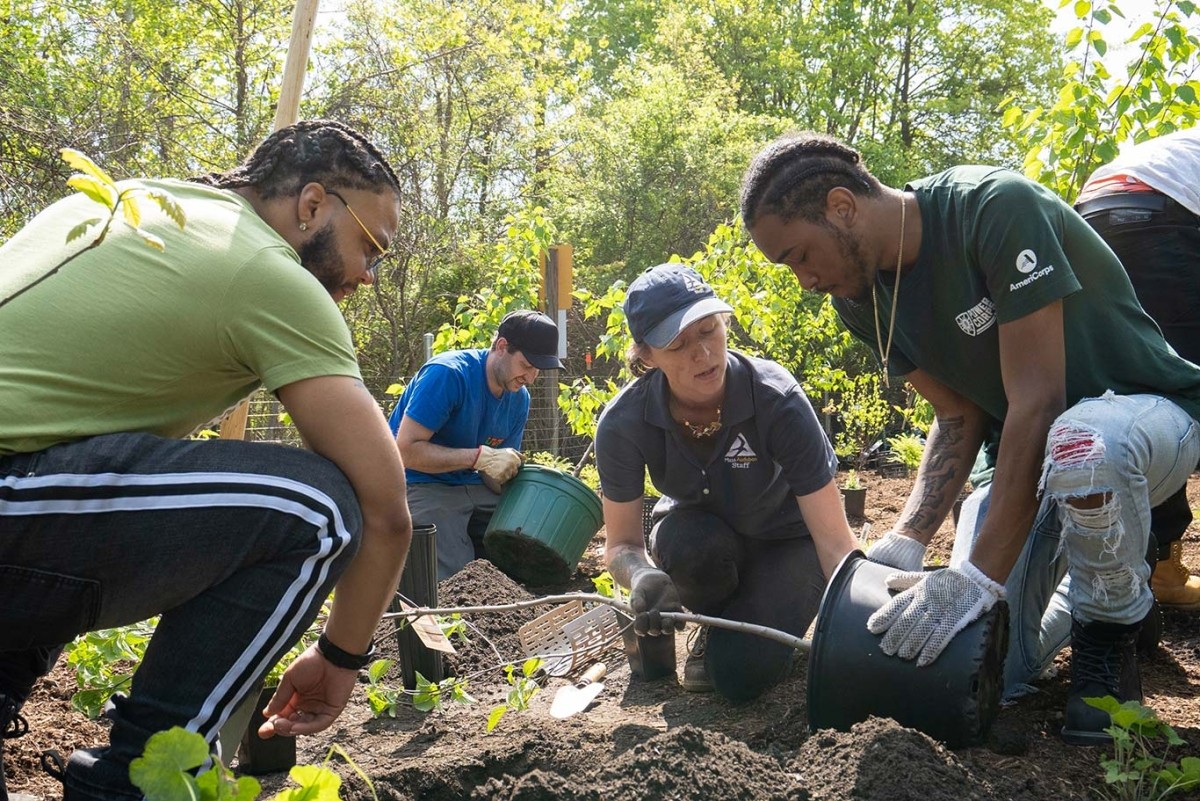
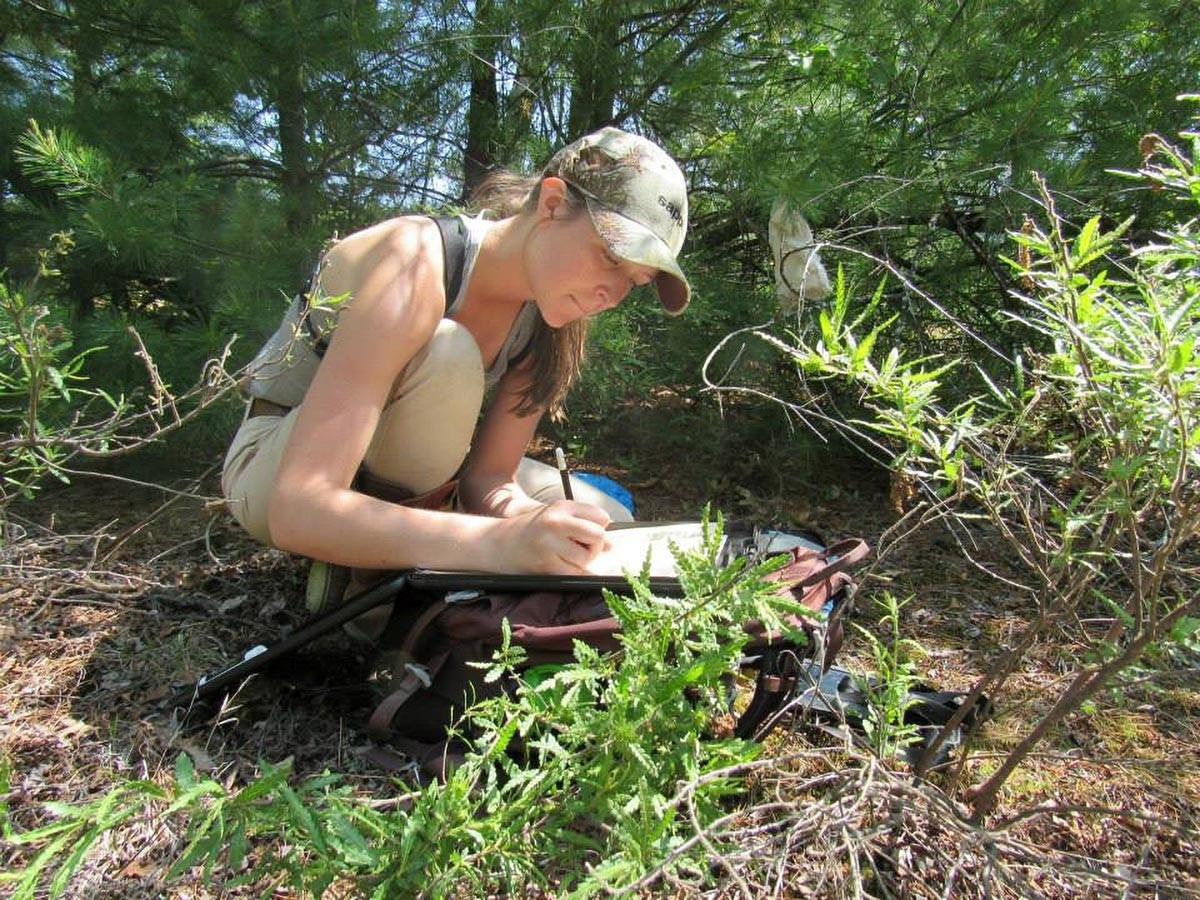
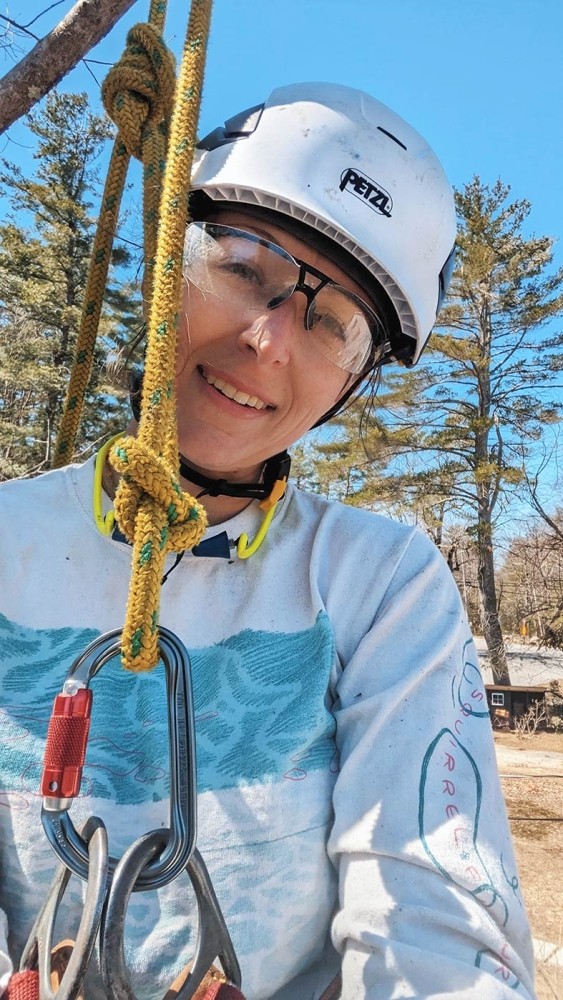
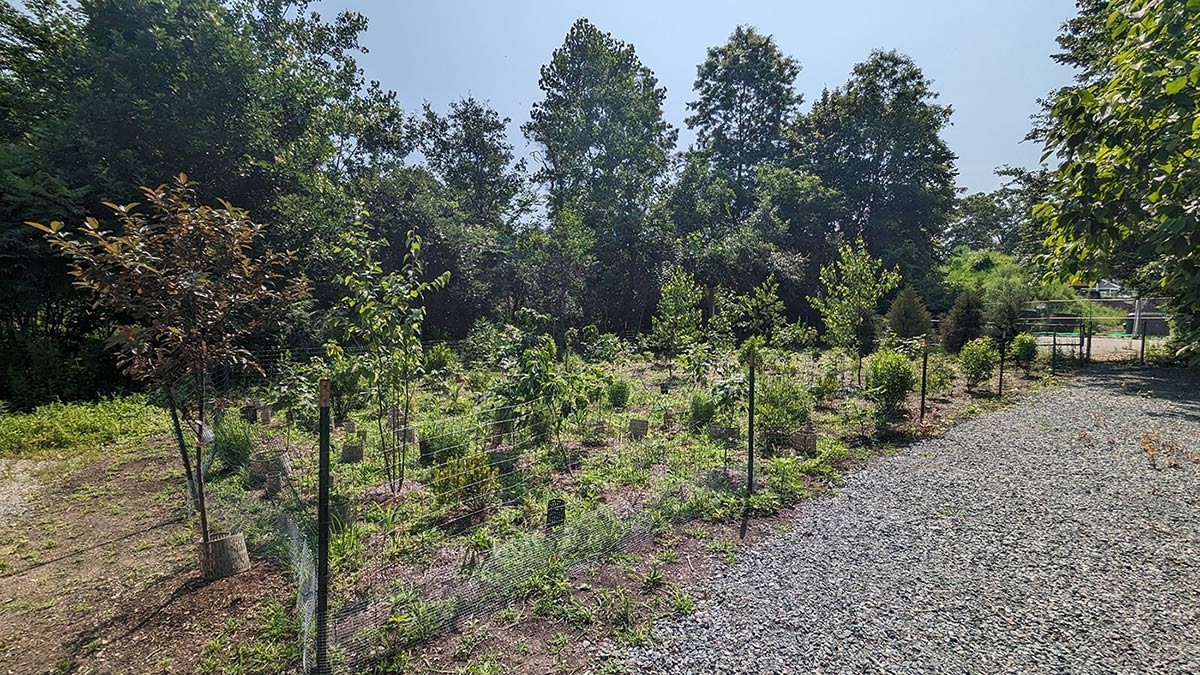
Discussion *